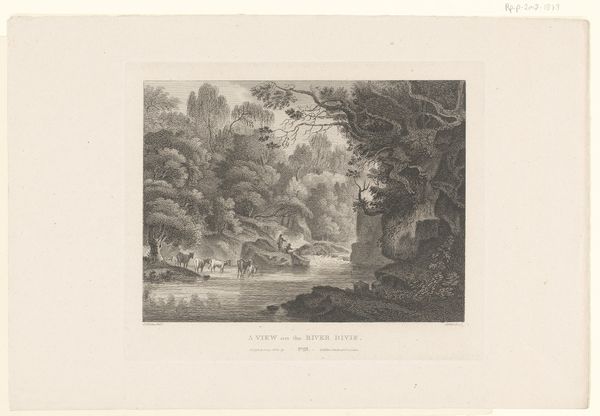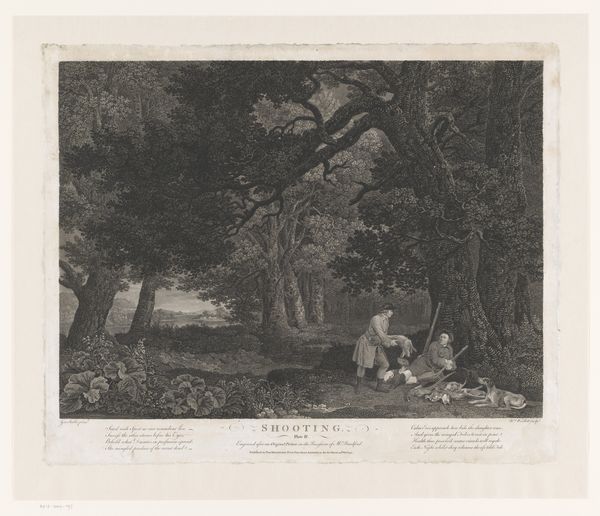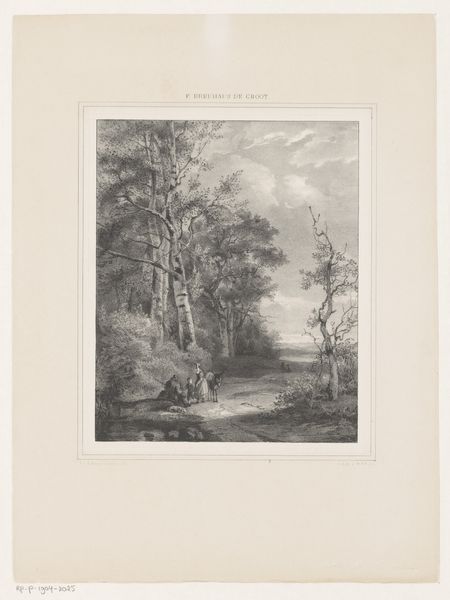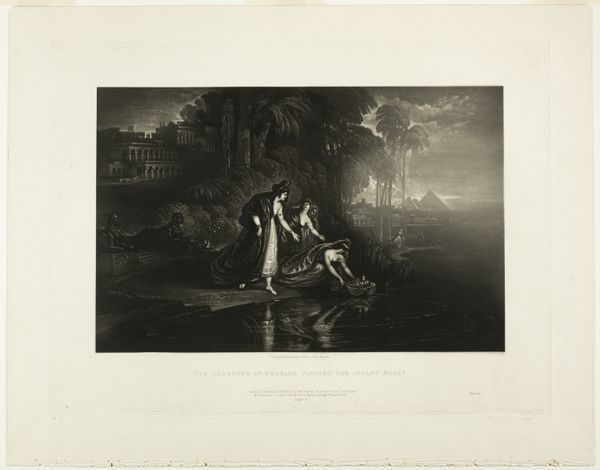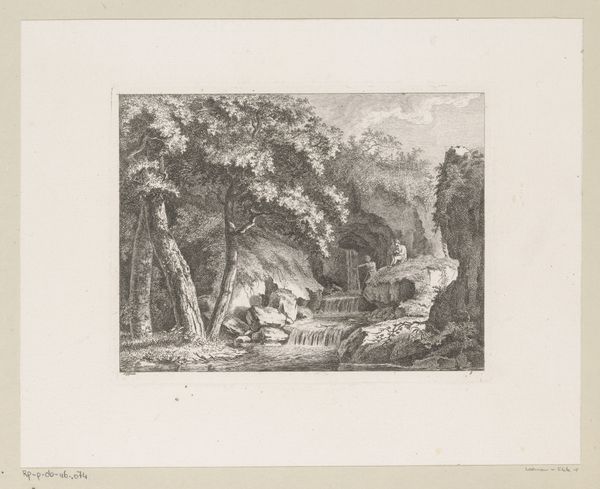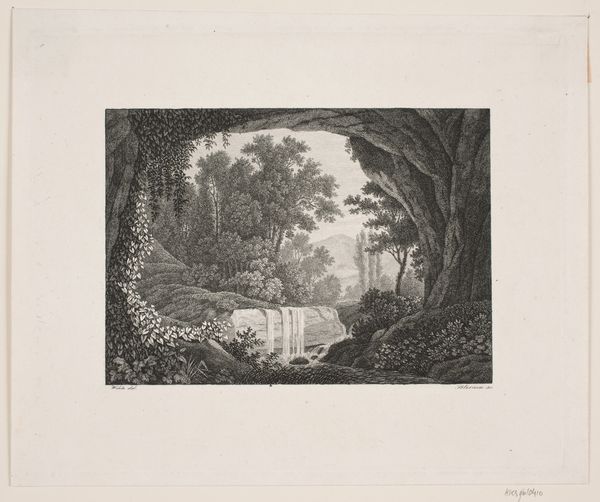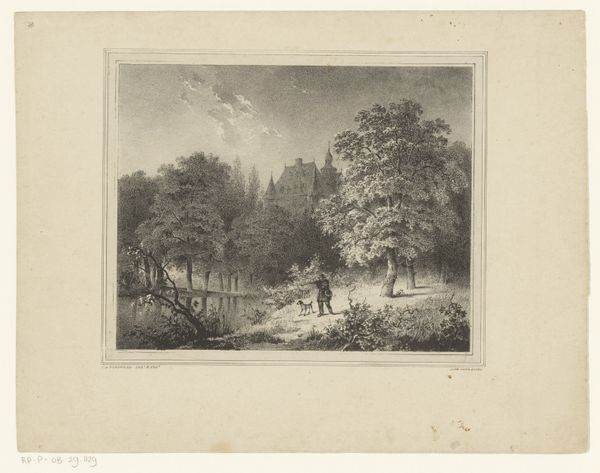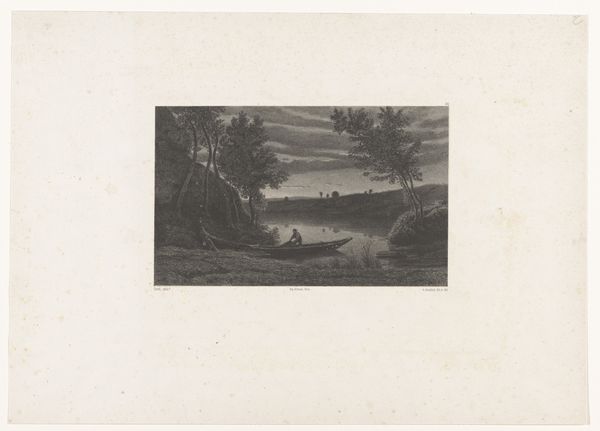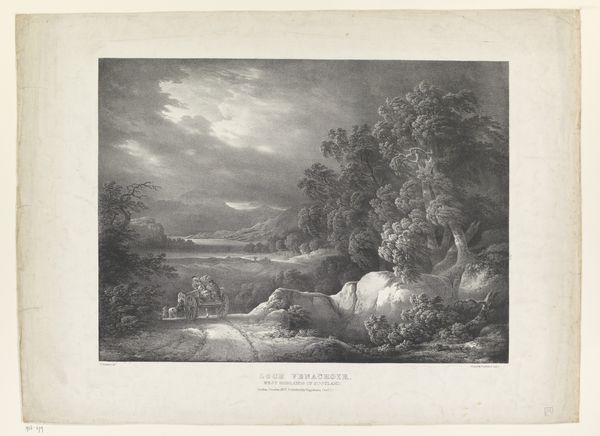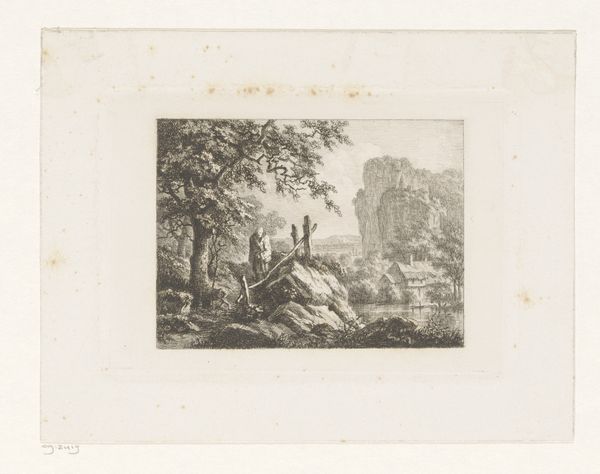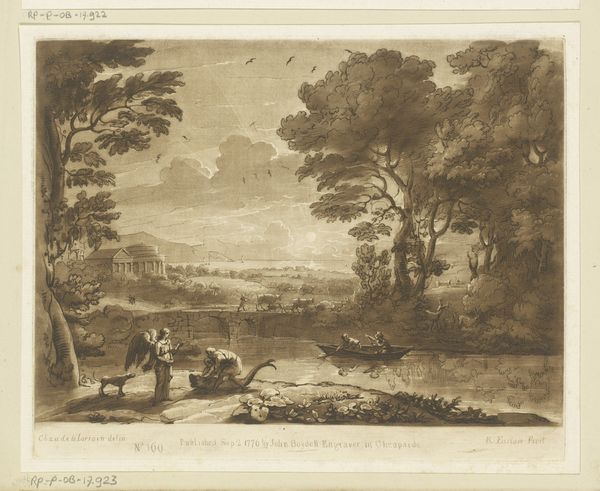
Adam and Eve Hearing the Judgement of the Almighty, from Illustrations of the Bible 1831
0:00
0:00
drawing, print, paper, charcoal
#
drawing
# print
#
landscape
#
charcoal drawing
#
figuration
#
paper
#
romanticism
#
charcoal
#
history-painting
#
charcoal
Dimensions: 190 × 290 mm (image); 268 × 357 mm (plate); 329 × 416 mm (sheet)
Copyright: Public Domain
Curator: John Martin's "Adam and Eve Hearing the Judgement of the Almighty," a print rendered in charcoal on paper, crafted around 1831. The scene unfolds with a somber and reflective tone. What are your immediate thoughts? Editor: It’s striking. The overwhelming darkness really emphasizes the couple's vulnerability. You feel a sense of their isolation and impending doom hanging in the air. The composition funnels your eye to them amidst the dramatic landscape. Curator: Martin was very much a product of his time. During this period, historical and biblical narratives were ripe for reinterpretation, and were laden with commentaries on political upheaval, divine will, and humankind's place in a changing world. It is key to understand the intersection of religious conviction and social anxieties in order to grasp its power. What meanings are produced or curtailed, by way of Martin's dramatic interpretation? Editor: I find myself thinking about how these stories serve as foundations for social structures, gender roles, and power dynamics that remain embedded in our contemporary society. That narrative of transgression, blame, and punishment continues to play out in various ways. We need to consider who this kind of storytelling benefits, who it marginalizes, and the implications for a politics of the present. The shaming and the naming! Curator: Absolutely. Martin employed mezzotint techniques, lending this image dramatic contrasts, heightening the emotional resonance through stark tonal shifts. It reinforces their exile but through the lens of religious authority during a volatile and morally uncertain era. The use of chiaroscuro invites reflection upon religious reform during times of industrialism. Editor: It really shows the visual rhetoric of power. That imposing, almost theatrical darkness surrounding Adam and Eve underscores their subjugation and positions the "Almighty" as an almost omnipresent force in their lives, shaping not only their destiny, but, arguably, humanity's relationship to the Divine. The light on their bodies is so deliberate, so selective, that one might perceive them as spotlights cast during a play. Curator: I agree. I find myself contemplating how societal views of morality, sin, and redemption shape public life. In essence, it offers a view of how this artwork serves to underscore themes about power and control. Editor: Seeing this interpretation of "Adam and Eve" with a keen eye towards historical social control as it mirrors present day structures and ideologies has shifted the work for me entirely. I am struck again by its resonance. Curator: Precisely, prompting us to probe the artwork's relevance to a more conscious present.
Comments
No comments
Be the first to comment and join the conversation on the ultimate creative platform.
